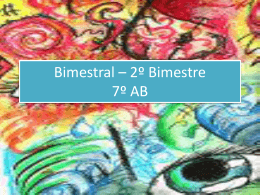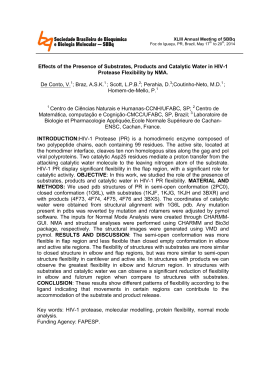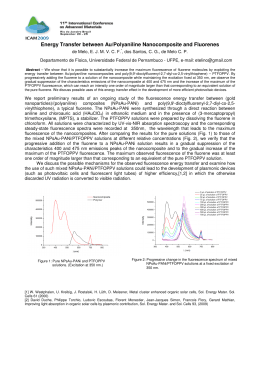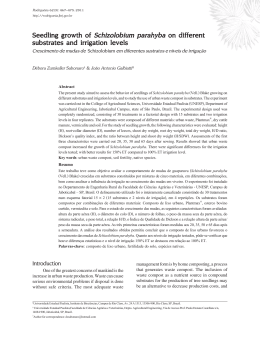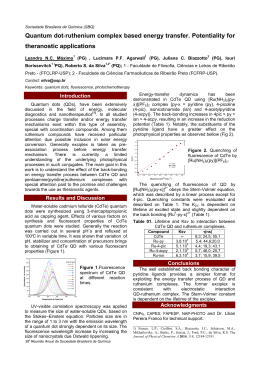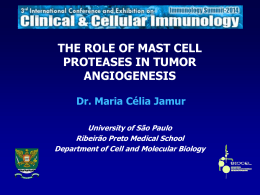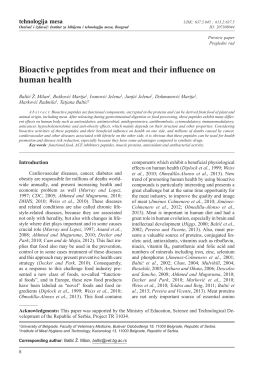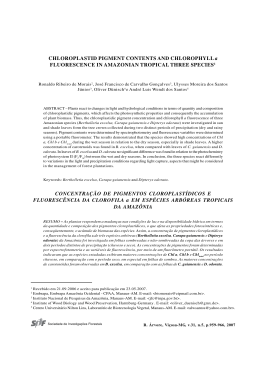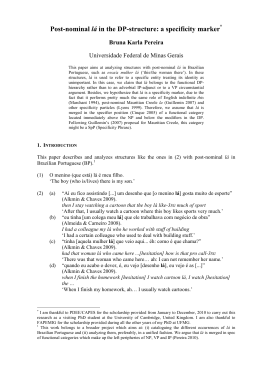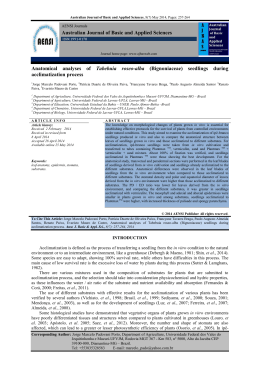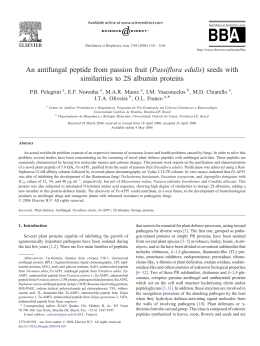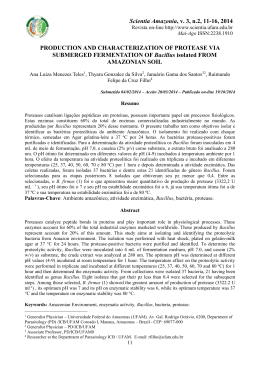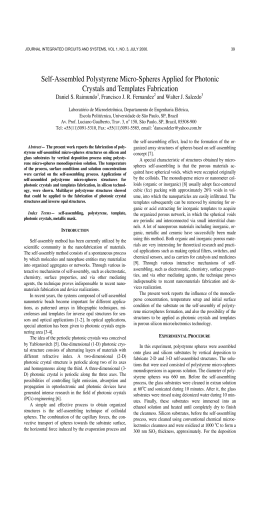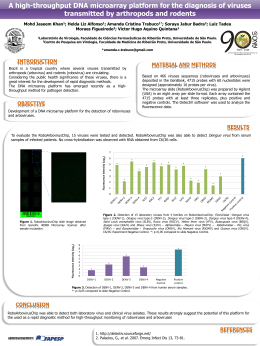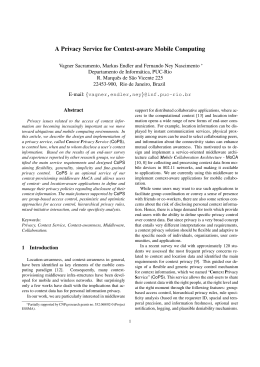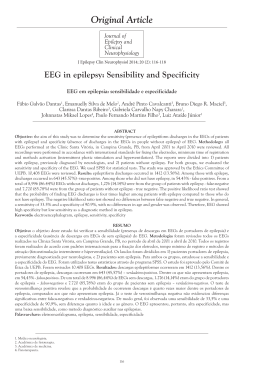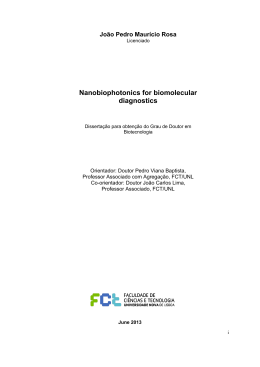BIOCHEMISTRY THEMATIC PROJECTS SUBSTRATES AND INHIBITORS FOR PROTEOLYTIC ENZYMES Luiz JULIANO Neto Biphysics Departament / Federal University of São Paulo (Unifesp) The purpose of this project is Substrates for carboxy-peptidases the development of organic synthesis FRET of peptides and amino acids aimed Acceptor (Dnp) at the study of proteases. We study a large diversity of proteolytic enzymes that have relationship Donor with different physiological and Peptide chain CO2H (Abz) physiopathological processes. Abz emission We have developed internally X= 320 nm quenched fluorescent peptides and Hydrolysis libraries, having as donnor-receptor fluorescent pair ortho-aminobenzoic Acceptor (Dnp) acid (Abz) and N-[2,4-dinitrophenyl], Donor respectively. The following proteolytic Peptide chain CO2H (Abz) enzymes have focused in the last 5 CO2H H2N years: a) Serine proteases:- plasma Abz emission X= 420 nm kallikreins, cathepsin G, human kallkrein 3 (PSA) and 6; b) Lisosomal cathepsin: F, K, H, S, V and X; c) Carmona AK, et al, Nature Protocols 1:1971 (2006) Proteases from tropical parasite diseases as leishmania and malaria, and from virus as dengue, yellow fever; d) Endooligopeptidases:- Human Our work is aimed also at the cell proteolysis, using the prolyloligopeptidase, and oligopeptidase B from substrates and inhibitors that we are developing. In addition, Trypanosoma e) Metalloproteases: angiotensin we established a cell culture laboratory for these studies converting enzyme and PHEX, 24.11 and 24.15); as well as to produce most of the proteases that we are f ) Convertases (Kex2, PC1, PC2, PC5/6 and furin). proposing to study. Non-natural amino acids have been incorporated in Physical-chemical measurements of some of the peptides, and modifications on their peptide bond obtained peptides, as well as enzymatic activities have have been introduced in order to obtain specific been done in order to correlate the form and function of substrates and inhibitors for the proteases we are substrates and inhibitors interacting with the proteases. studying. BIOCHEMISTRY MAIN PUBLICATIONS Continuous fluorescence resonance energy transfer for carboxypeptidases, application to angiotensin I-converting enzyme assay. Angiotensin I-converting enzyme (ACE) is involved in various physiological and physiopathological conditions; therefore, the measurement of its catalytic activity may provide essential clinical information. This protocol describes a sensitive and rapid procedure for determination of ACE activity using fluorescence resonance energy transfer Library II (FRET) substrates Library I K(Dnp)–k–X7X6X5X4X3X2X1 K(Dnp)–X6X5X4X3X2X1–K(Abz) containing –K(Abz)–k o-aminobenzoic acid (Abz) as the fluorescent group and 2,4-dinitrophenyl (Dnp) as the quencher acceptor. Hydrolysis of a peptide bond between the donor/acceptor pair generates fluorescence Beads of PEGA1900 resin from the libraries I that can be detected and II after the incubation with trypsin continuously, allowing (15h) and chymotrypsin (20 h) observed quantitative measurement under the fluorescence microscope of the enzyme activity. The FRET substrates provide a useful tool for kinetic studies and for ACE determination in biological fluids and crude tissue extracts. This methodology can be adapted for determinations using a 96-well fluorescence plate reader. Farias SL, Gazarini ML, Melo RL, Hirata IY, Juliano MA, Juliano L, Garcia CRS. 2005. Cysteine-protease activity elicited by Ca2+ stimulus in Plasmodium. Molecular Biochemical Parasitology. 141: 71-79. Trypsin Chymotrypsin SUMMARY OF RESULTS TO DATE AND PERSPECTIVES Kacprzak MM, Than ME, Juliano L, et al. 2005. Mutations of the PC2 substrate binding pocket alter enzyme specificity. J Biol Chem. 280:31850-31858. Angelo PF, Lima AR, Alves FM, et al. 2006. Substrate specificity of human kallikrein 6: Salt and glycosaminoglycan activation effects. J Biol Chem. 281: 3116-3126. Lopes AR, Juliano MA, Marana SR, Juliano L, Terra WR. 2006. Substrate specificity of insect trypsins and the role of their subsites in catalysis. Insect Biochem Mol Biol. 36:130-140. Gouvea IE, Judice WA, Cezari MH, Juliano MA, Juhasz T, Szeltner Z, Polgar L, Juliano L. 2006. Kosmotropic salt activation and substrate specificity of poliovirus protease 3C. Biochemistry. 45:12083-12089. Gouvea IE, Izidoro MA, Judice WA, Cezari MH, et al. 2007. Substrate specificity of recombinant dengue 2 virus NS2B-NS3 protease: Influence of natural and unnatural basic amino acids on hydrolysis of synthetic fluorescent substrates. Arch Biochem Biophys. 457:187-196. Carmona AK, Schwager SL, Juliano MA, Juliano L, Sturrock ED. 2006. A continuous fluorescence resonance energy transfer angiotensin I-converting enzyme assay. Nature Protocols. 1:1971-1976. Alves FM, Hirata IY, Gouvea IE, Alves MF, et al. 2007. Controlled Peptide Solvation in Portion-Mixing Libraries of FRET Peptides: Improved Specificity Determination for Dengue 2 Virus NS2B-NS3 Protease and Human Cathepsin S. J Comb Chem. 9:627-634. Gorrao SS, Hemerly JP, Lima AR, Melo RL, et al. 2007. Fluorescence resonance energy transfer (FRET) peptides and cycloretro-inverso peptides derived from bradykinin as substrates and inhibitors of prolyl oligopeptidase. Peptides. 28:2146-2154. Moss CX, Westrop GD, Juliano L, Coombs GH, Mottram JC. 2007. Metacaspase 2 of Trypanosoma brucei is a calcium-dependent cysteine peptidase active without processing. FEBS Lett. 581:5635-5639 Luiz JULIANO Neto Universidade Federal de São Paulo (Unifesp) Departamento de Biofísica Rua Três de Maio, 100 – Vila Clementino 04044020 – São Paulo, SP – Brasil +55-11-5576-4455 [email protected]
Download

